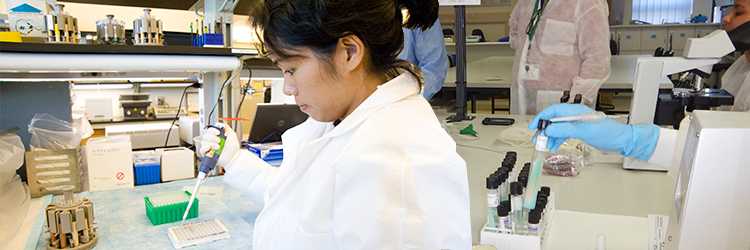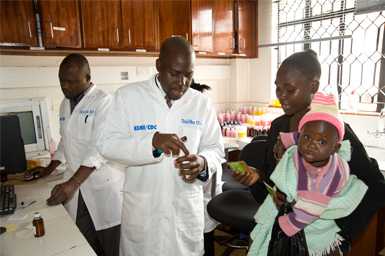Expanding Quality Care and Treatment

What We Do
Thanks to recent scientific breakthroughs, we now know, unequivocally, that early and effective antiretroviral treatment (ART) not only significantly improves the health of those living with HIV, but also reduces transmission of the disease. Early treatment is especially important for children living with HIV, who have extremely high mortality rates without early, effective treatment. For this reason, the World Health Organization released new guidelines in 2015 calling for treatment for all people with HIV.
As a lead implementing agency of the U.S. President’s Emergency Plan for AIDS Relief (PEPFAR), CDC has been at the forefront of global efforts to increase access to life-saving antiretroviral drugs for millions of people around the world. CDC works with Ministries of Health, community groups, and other partners to:
- Help countries plan implement and evaluate HIV care and treatment programs
- Develop innovative approaches to target hard-to-reach and at-risk populations
- Strengthen case finding efforts and explore new testing approaches to identify children living with HIV
- Ensure all family members have access to testing, care and treatment services
- Help countries scale up laboratory tests such as viral load to improve adherence to medication and treatment outcomes
- Strengthen efforts to help ensure people with HIV stay on treatment
- Integrate HIV and TB care and treatment programs to improve efficiency and outcomes
- Provide treatment in settings where people already receive other healthcare and community services
- Encourage age appropriate clinical settings that cater to the unique needs of children, adolescents and families
Why We Do It
With 19 million people now on ART, 6.4 million of them through programs supported by CDC, and recent reductions in HIV across the globe, we know tremendous progress is possible. Expanding access to HIV care and treatment also brings us closer to achieving the UNAIDS 90-90-90 targets, which call for 90 percent of people living with HIV to know their status, 90 percent of those with known status to be on ART, and 90 percent of those on ART to be virally suppressed (i.e., on successful therapy) by the year 2020. In order to reach 90-90-90 for everyone, CDC supports special efforts to reach populations with unique challenges to access and retention in care and treatment programs, such as children and adolescents, pregnant and breast feeding women, and key populations. By significantly increasing the number of HIV-infected people on ART, we are helping to ensure that millions of people with HIV live long and healthy lives, and that millions more at high risk can remain HIV-free.
Results
In 2016, CDC, through PEPFAR, supported:
- Lifesaving ART for 6.4 million HIV-infected people, which is roughly one out of every three people on treatment worldwide.
- Screening of 3.5 million TB cases for HIV, resulting in HIV treatment for 142,332 patients infected with both HIV and TB.
HIV treatment for 411,000 pregnant women, to prevent transmission to their children.
For more information on care and treatment, see below:

A Life Transformed by HIV Treatment(https://www.cdc.gov/globalhivtb/who-we-are/success-stories/success-story-pages/nigeria-fct.html)
In 2005, Christopher Leo, living with HIV and very sick with severe arthritis, was admitted to the University of Abuja Teaching Hospital in Gwagwalada, Federal Capitol Territory (FCT), Nigeria. Christopher’s wife had recently died of AIDS, leaving behind two children for him to care for. His family believed that he would not live, so they planned to take him to his village, Sabon Gida in Kaduna State, to say goodbye.
Read more: HTML(https://www.cdc.gov/globalhivtb/who-we-are/success-stories/success-story-pages/nigeria-fct.html) »
- Page last reviewed: September 21, 2017, 03:10 PM
- Page last updated: September 21, 2017, 03:10 PM
- Content source:


 ShareCompartir
ShareCompartir